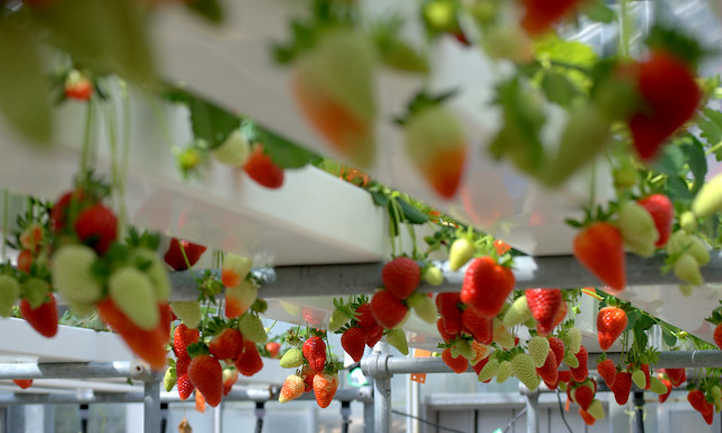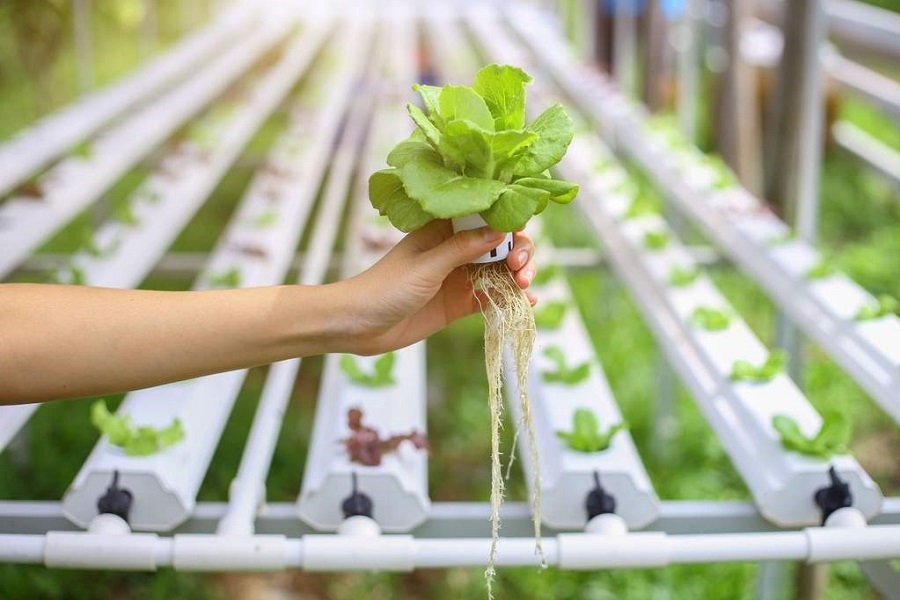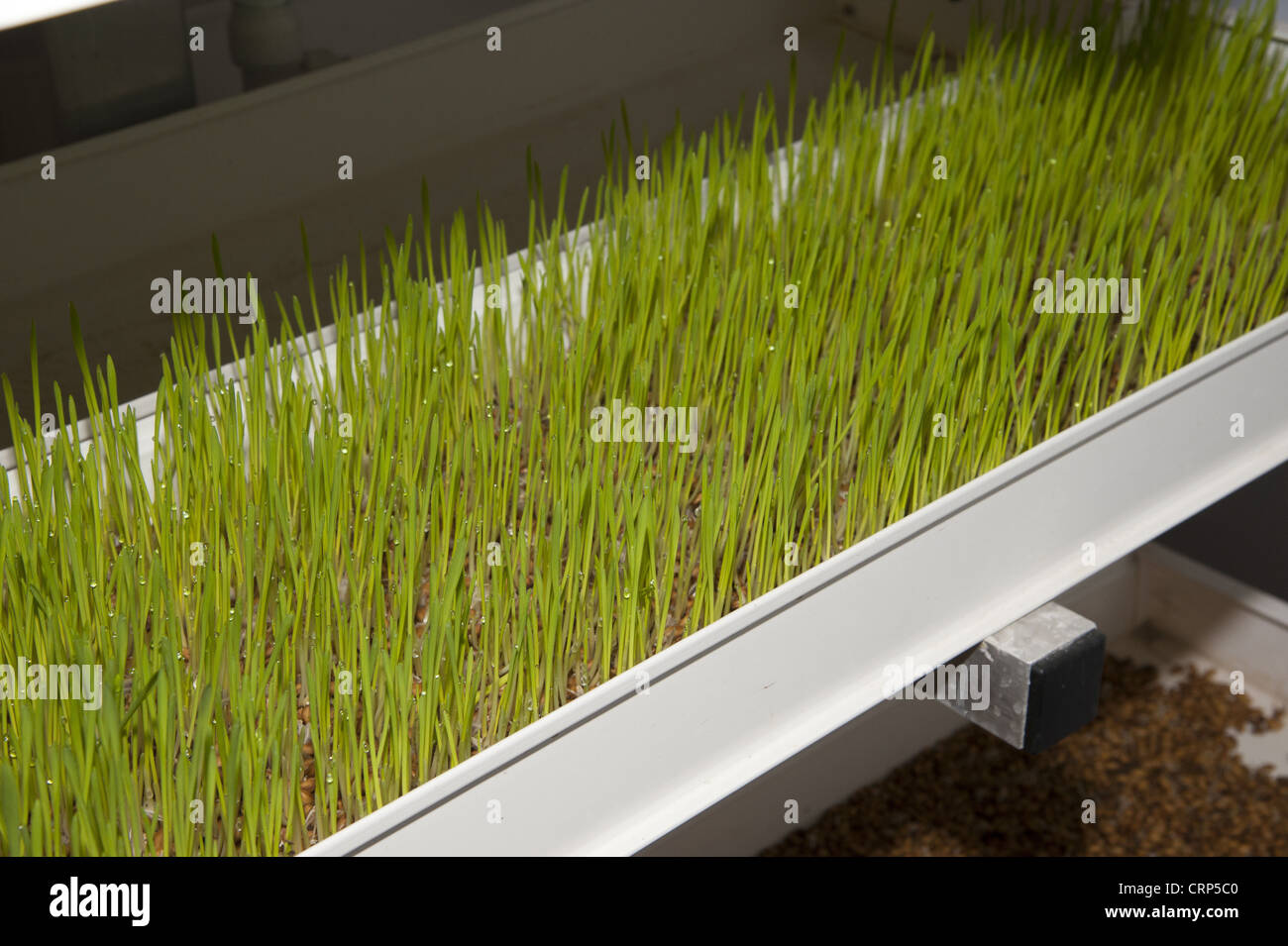
Introduction: The Allure of Hydroponic Berry Cultivation
Imagine plucking plump, juicy strawberries in the dead of winter, or savoring the unique tang of hydroponically grown gooseberries without ever stepping foot in a muddy field. Hydroponics, the art of growing plants without soil, has revolutionized agriculture, and specialty berries are no exception. This method offers unprecedented control over growing conditions, leading to higher yields, faster growth rates, and superior fruit quality. But delving into the world of hydroponic berry cultivation requires careful planning, a solid understanding of plant physiology, and a willingness to embrace new techniques. This comprehensive guide will walk you through every step, from selecting the right varieties to troubleshooting common problems, ensuring your hydroponic berry venture is a sweet success.
Why Choose Hydroponics for Specialty Berries?
Traditional berry farming, while charming, is fraught with challenges. Pests, diseases, fluctuating weather patterns, and soilborne pathogens can decimate crops, leading to significant losses for farmers. Hydroponics offers a compelling alternative, sidestepping many of these issues. Let’s explore the key advantages:
- Increased Yields: Hydroponic systems optimize nutrient delivery, water usage, and environmental conditions, resulting in significantly higher yields compared to traditional soil-based farming. Plants receive precisely what they need, when they need it, leading to vigorous growth and abundant fruit production.
- Faster Growth Rates: With readily available nutrients and optimal growing conditions, berries grown hydroponically mature much faster. This allows for multiple harvests per year, increasing profitability and reducing the time it takes to recoup your initial investment.
- Reduced Water Consumption: Hydroponic systems recirculate water, minimizing waste and conserving precious resources. In some cases, water usage can be reduced by as much as 90% compared to conventional farming methods. This is particularly crucial in regions facing water scarcity.
- Pest and Disease Control: By eliminating soil, you eliminate many soilborne pests and diseases that plague traditional berry farms. This reduces the need for harmful pesticides and herbicides, resulting in healthier plants and safer produce. Plus, the controlled environment of a hydroponic system allows for easier monitoring and management of any pest or disease outbreaks that may occur.
- Year-Round Production: Hydroponics allows you to grow berries year-round, regardless of the external climate. This is particularly advantageous for specialty berries that have a limited growing season in traditional settings. Imagine offering fresh, locally grown raspberries in the middle of winter!
- Space Efficiency: Hydroponic systems can be set up in a variety of configurations, including vertical stacks, maximizing space utilization. This is ideal for urban farming or areas with limited land availability. You can grow a significant amount of berries in a relatively small area.
- Improved Fruit Quality: By carefully controlling nutrient levels and environmental factors, you can produce berries with superior flavor, texture, and nutritional content. Hydroponically grown berries often have a higher sugar content and a more intense aroma.
Selecting the Right Specialty Berries for Hydroponics
Not all berries are created equal when it comes to hydroponic cultivation. Some varieties are naturally more adaptable to soilless systems than others. Here are some popular and promising specialty berry options for hydroponics:
- Strawberries: Strawberries are arguably the most popular berry for hydroponics, and for good reason. They are relatively easy to grow, produce fruit quickly, and are highly profitable. Everbearing varieties, which produce fruit throughout the growing season, are particularly well-suited for hydroponic systems.
- Raspberries: Raspberries can also be successfully grown hydroponically, although they require more attention than strawberries. Choose everbearing or primocane-fruiting varieties for continuous production. Proper pruning and trellising are essential for managing raspberry growth in a hydroponic system.
- Blueberries: While blueberries are traditionally grown in acidic soil, certain varieties can be adapted to hydroponic cultivation with careful pH management. Southern Highbush blueberries are generally considered the most suitable for hydroponics.
- Blackberries: Similar to raspberries, blackberries can be grown hydroponically with proper support and pruning. Thornless varieties are often preferred for ease of harvesting.
- Gooseberries: These tart and tangy berries are gaining popularity among hydroponic growers. They are relatively easy to grow and produce abundant fruit.
- Honeyberries (Haskap): These early-fruiting berries are exceptionally hardy and can tolerate a wide range of growing conditions, making them a good option for hydroponics.
- Cranberries: While less common, cranberries can be grown hydroponically with specialized systems that mimic their natural bog environment.
When selecting your berry varieties, consider factors such as your local climate, the availability of suitable cultivars, and your target market. Research the specific needs of each variety and choose those that are best suited for your hydroponic setup.
Designing Your Hydroponic System for Berries
The type of hydroponic system you choose will depend on your budget, space constraints, and the specific needs of your chosen berry varieties. Here are some of the most common systems used for growing berries hydroponically:
- Deep Water Culture (DWC): In DWC, the plant roots are suspended in a nutrient-rich solution that is constantly aerated. This is a simple and inexpensive system that is well-suited for strawberries and other smaller berry plants.
- Nutrient Film Technique (NFT): NFT involves flowing a thin film of nutrient solution over the plant roots. This system is efficient in terms of water and nutrient usage and is often used for strawberries and raspberries.
- Ebb and Flow (Flood and Drain): In ebb and flow systems, the growing tray is periodically flooded with nutrient solution and then drained. This system is versatile and can be used for a variety of berry types.
- Drip Irrigation: Drip irrigation delivers nutrient solution directly to the root zone through small emitters. This is a popular system for larger berry plants like raspberries and blueberries, as it allows for precise control over nutrient delivery.
- Coco Coir or Rockwool Systems: These systems use inert growing media like coco coir or rockwool to support the plants. Nutrient solution is delivered through drip irrigation. These systems offer excellent drainage and aeration and are suitable for a wide range of berry varieties.
Regardless of the system you choose, ensure that it provides adequate support for the plants, allows for proper drainage and aeration, and is easy to maintain.
Essential Components of a Hydroponic Berry System
Beyond the basic hydroponic system, there are several other essential components that you’ll need to consider:
- Growing Medium: While hydroponics is soilless, you’ll still need a growing medium to support the plants and provide anchorage for the roots. Common options include coco coir, rockwool, perlite, and vermiculite.
- Nutrient Solution: The nutrient solution is the lifeblood of your hydroponic system. It contains all the essential nutrients that the plants need to grow and thrive. Use a commercially available hydroponic nutrient solution that is specifically formulated for berries, or formulate your own using individual nutrient salts.
- pH Meter and TDS Meter: Monitoring the pH and TDS (total dissolved solids) of your nutrient solution is crucial for ensuring optimal plant growth. A pH meter measures the acidity or alkalinity of the solution, while a TDS meter measures the concentration of dissolved nutrients.
- Air Pump and Air Stone: An air pump and air stone are used to aerate the nutrient solution, providing oxygen to the plant roots. This is particularly important in DWC systems.
- Water Pump: A water pump is used to circulate the nutrient solution throughout the system.
- Grow Lights (Optional): If you are growing berries indoors, you’ll need to provide supplemental lighting using grow lights. LED grow lights are energy-efficient and provide the full spectrum of light that plants need.
- Environmental Control System (Optional): An environmental control system can help you regulate temperature, humidity, and CO2 levels in your growing environment. This is particularly important for optimizing growth and yield in indoor hydroponic systems.
Setting Up Your Hydroponic System: A Step-by-Step Guide
Once you’ve chosen your system and gathered your materials, it’s time to set up your hydroponic system. Here’s a general step-by-step guide:
- Assemble the System: Follow the manufacturer’s instructions to assemble your chosen hydroponic system. Ensure that all connections are secure and that the system is level.
- Prepare the Growing Medium: If you are using a growing medium like coco coir or rockwool, pre-soak it in nutrient solution to hydrate it and remove any dust or debris.
- Prepare the Nutrient Solution: Mix the nutrient solution according to the manufacturer’s instructions. Adjust the pH to the optimal range for your chosen berry varieties (typically between 5.5 and 6.5).
- Plant the Berry Plants: Gently remove the berry plants from their containers and plant them in the growing medium. Ensure that the roots are well-covered and that the plants are securely supported.
- Fill the System with Nutrient Solution: Fill the hydroponic system with the prepared nutrient solution. Ensure that the roots are submerged or that the nutrient solution is circulating properly.
- Turn on the System: Turn on the water pump, air pump, and grow lights (if applicable). Monitor the system closely to ensure that everything is functioning properly.
Managing Your Hydroponic Berry System
Once your hydroponic system is up and running, regular maintenance is essential for ensuring optimal plant growth and fruit production. Here are some key tasks:
- Monitor pH and TDS Levels: Check the pH and TDS levels of your nutrient solution regularly (at least once a week) and adjust as needed. Use a pH up or pH down solution to adjust the pH, and add more nutrient concentrate to increase the TDS.
- Change the Nutrient Solution: Replace the nutrient solution every 1-2 weeks to prevent the buildup of salts and other contaminants.
- Prune and Train the Plants: Prune and train the berry plants regularly to promote air circulation, light penetration, and fruit production. Remove any dead or diseased leaves or branches.
- Pollinate the Flowers: Many berry varieties require pollination to produce fruit. If you are growing berries indoors, you may need to hand-pollinate the flowers using a small brush or cotton swab. Alternatively, you can use a fan to circulate air and promote pollination.
- Control Pests and Diseases: Monitor the plants regularly for signs of pests or diseases. If you detect any problems, take action immediately to prevent them from spreading. Use organic pest control methods whenever possible.
- Harvest the Berries: Harvest the berries when they are fully ripe and have reached their peak flavor. Handle the berries gently to avoid bruising them.
Nutrient Management for Hydroponic Berries
Providing the right nutrients is crucial for successful hydroponic berry cultivation. Berries have specific nutrient requirements that vary depending on the growth stage. Here’s a general guideline:
- Macronutrients: The primary macronutrients that berries need are nitrogen (N), phosphorus (P), and potassium (K). Nitrogen is essential for vegetative growth, phosphorus is important for root development and flowering, and potassium is crucial for fruit development and ripening.
- Micronutrients: Berries also require micronutrients such as iron (Fe), manganese (Mn), zinc (Zn), copper (Cu), boron (B), and molybdenum (Mo). These micronutrients play a vital role in various plant processes.
- Nutrient Ratios: The ideal nutrient ratios for berries vary depending on the growth stage. During vegetative growth, a higher nitrogen ratio is beneficial. During flowering and fruiting, a higher phosphorus and potassium ratio is preferred.
- EC (Electrical Conductivity): EC is a measure of the total salt concentration in the nutrient solution. The optimal EC range for berries typically falls between 1.5 and 2.5 mS/cm.
Use a commercially available hydroponic nutrient solution that is specifically formulated for berries, or formulate your own using individual nutrient salts. Regularly monitor the nutrient levels in your solution and adjust as needed to ensure optimal plant growth and fruit production.
Environmental Control: Optimizing Growing Conditions
Controlling the environment is key to maximizing yields and fruit quality in hydroponic berry cultivation. Here are some important environmental factors to consider:
- Temperature: The optimal temperature range for most berries is between 65°F and 75°F (18°C and 24°C). Temperatures that are too high or too low can negatively impact plant growth and fruit production.
- Humidity: The ideal humidity level for berries is between 50% and 70%. High humidity can promote fungal diseases, while low humidity can lead to water stress.
- Light: Berries need adequate light to photosynthesize and produce fruit. If you are growing berries indoors, provide supplemental lighting using grow lights. The optimal light intensity and photoperiod (day length) will vary depending on the berry variety.
- CO2: Carbon dioxide (CO2) is essential for photosynthesis. Increasing the CO2 concentration in the growing environment can boost plant growth and yield. However, it’s important to maintain proper ventilation to prevent CO2 buildup from becoming toxic.
Use an environmental control system to regulate temperature, humidity, and CO2 levels in your growing environment. This will help you optimize growing conditions and maximize yields.
Troubleshooting Common Problems in Hydroponic Berry Cultivation
Even with careful planning and management, you may encounter some problems in your hydroponic berry venture. Here are some common issues and how to address them:
- Nutrient Deficiencies: Nutrient deficiencies can manifest as yellowing leaves, stunted growth, or poor fruit development. Identify the specific nutrient deficiency and adjust the nutrient solution accordingly.
- Pest Infestations: Common pests that can attack hydroponic berries include aphids, spider mites, and whiteflies. Use organic pest control methods such as neem oil or insecticidal soap to control these pests.
- Fungal Diseases: Fungal diseases such as powdery mildew and botrytis can thrive in humid conditions. Improve air circulation and reduce humidity to prevent these diseases. Use fungicides if necessary.
- Root Rot: Root rot is caused by anaerobic conditions in the root zone. Ensure that the roots are properly aerated and that the growing medium is well-drained.
- pH Imbalance: An imbalanced pH can prevent the plants from absorbing nutrients properly. Monitor the pH regularly and adjust as needed.
By being proactive and addressing problems promptly, you can minimize their impact on your hydroponic berry crop.
Harvesting and Post-Harvest Handling
Harvesting berries at the right time is crucial for ensuring optimal flavor and shelf life. Harvest the berries when they are fully ripe and have reached their peak color and flavor. Handle the berries gently to avoid bruising them. Store the harvested berries in a cool, dry place. Berries can be stored in the refrigerator for several days.
The Future of Hydroponic Berry Growing
Hydroponic berry cultivation is a rapidly growing field with immense potential. As technology advances and more research is conducted, we can expect to see even more efficient and sustainable hydroponic systems for growing berries. The future of berry farming is undoubtedly trending towards soilless cultivation, offering the promise of year-round production, higher yields, and superior fruit quality.
Conclusion: Embrace the Hydroponic Berry Revolution
Growing specialty berries hydroponically is a rewarding and profitable venture. By understanding the principles of hydroponics, selecting the right varieties, and managing your system carefully, you can unlock a bounty of delicious and nutritious berries, regardless of the season. Embrace the hydroponic berry revolution and experience the future of farming!



